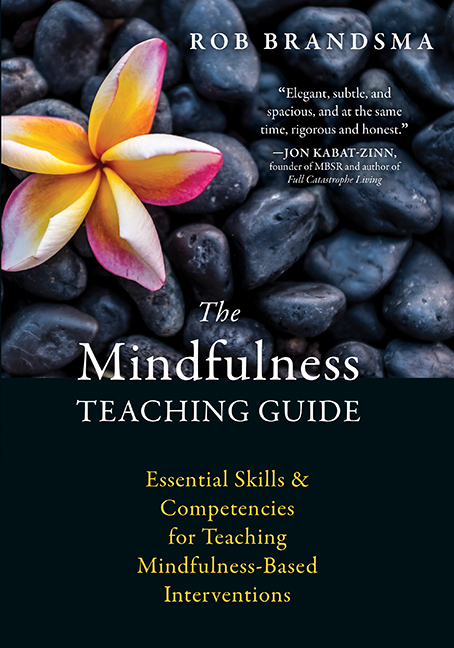By Rob Brandsma, author of The Mindfulness Teaching Guide
“The conscious mind is a self-healing mind,” says psychiatrist and philosopher Roger Walsh. He is right. Just look at fear for example. The message of fear is, “Flee.” Our first impulse is to follow this instruction. So we think and act in an attempt to escape the fear.
But fear, upon closer examination, is often misplaced. We may have fear of a difficult interview, of a new relation or of going outside, or we can simply wake up feeling fearful. Although this feeling of fear is not based on actual danger, we still have the tendency to flee the challenge. In reality, we are fleeing from the feeling of fear itself and not from any danger it is pointing to.
By fleeing, we only magnify the fear. The feedback information from our action of fleeing sends a message to the danger sensor in our brains, the amygdala, that something really is wrong now. More adrenaline is released, the heart pumps harder, and thinking accelerates. The feeling of fear expands around the small core, the original stimulus, like a stone rolling down the mountain which collects more and more snow and ends up in an avalanche.
See also: The Promise of Formal Mindful Meditation
We can stop this process by approaching our fear. “One of the advantages of exploring fear,” says Walsh, “is that it disappears more quickly if you consciously observe it and stay with it. People who meditate say that we are like a painter who paints a tiger and then runs away from it in mortal terror. We paint ideas and fantasies about pain and catastrophe, and then recoil back in terror. But if we observe ourselves mindfully, we see that the tiger or catastrophe is not real, and this awareness makes us free.”
Creating mindful awareness in this way has a healing effect of its own.
 Rob Brandsma is a licensed health psychologist, pedagogue, and author of The Mindfulness Teaching Guide. He is cofounder and codirector of the Amsterdam Centrum voor Mindfulness (Netherlands) and head of its teacher training programs. As a mindfulness teacher, he has long-standing experience in teaching mindfulness-based applications, such as mindfulness-based stress reduction (MBSR) and mindfulness-based cognitive therapy (MBCT), as well as compassion-based programs.
Rob Brandsma is a licensed health psychologist, pedagogue, and author of The Mindfulness Teaching Guide. He is cofounder and codirector of the Amsterdam Centrum voor Mindfulness (Netherlands) and head of its teacher training programs. As a mindfulness teacher, he has long-standing experience in teaching mindfulness-based applications, such as mindfulness-based stress reduction (MBSR) and mindfulness-based cognitive therapy (MBCT), as well as compassion-based programs.


 2024 Peace Playbook: 3 Tactics to Avoid Clashes with Your Partner
2024 Peace Playbook: 3 Tactics to Avoid Clashes with Your Partner